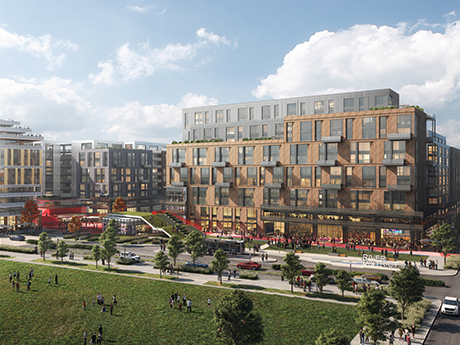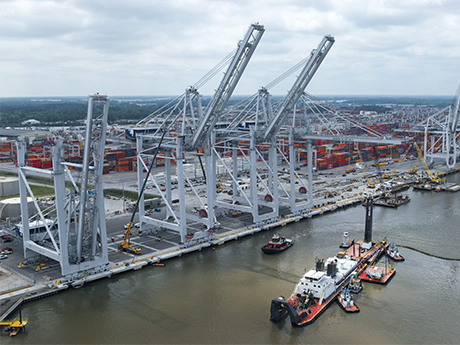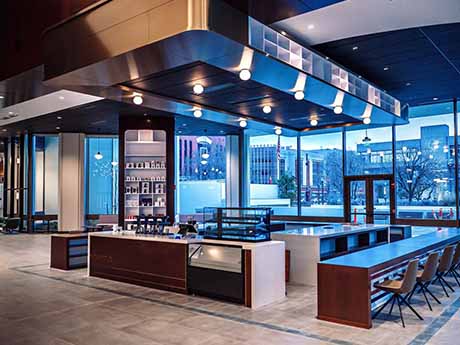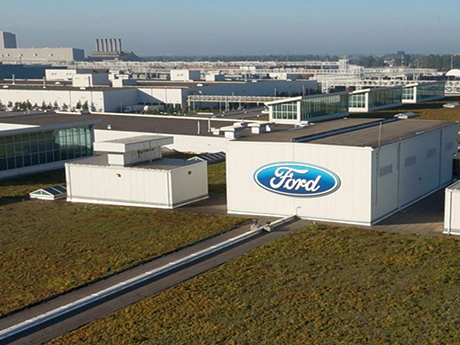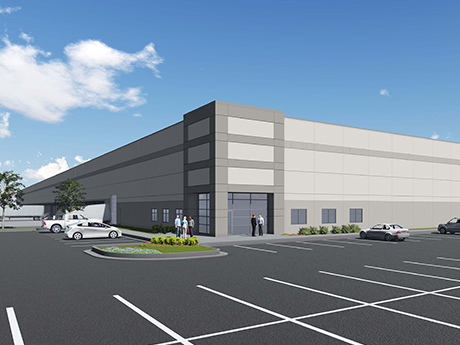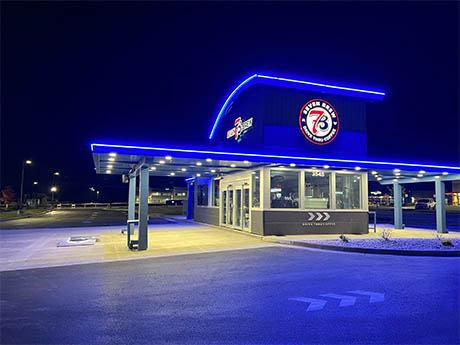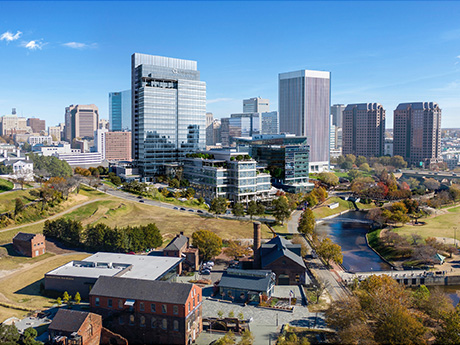The volatility in the capital markets over the past 12 to 18 months has wreaked havoc on many aspects of the economy, and real estate has not gone unscathed. Unlike the retail and office sectors whereby there is a fundamental shift in how people work and shop, housing is a basic need. The equilibrium between supply and demand in metro New Orleans’ multifamily market is still in sync. It would however be naïve to suggest there are no challenges that are affecting our real estate market. The “three dreaded Is” (i.e. inflation, interest rates, insurance) is not a Halloween mask but a euphemism that crystallizes the challenges multifamily owners are faced with both locally and nationally. Each of these factors singularly are powerful forces, yet the trifecta is playing a role in the current state of our metro market. However, despite these challenges, the regional multifamily market has stable occupancy with most submarkets reporting levels in the 92 to 94 percent range. Overall monthly rental rates average $1,263 with rents ranging from a low of $1,000 in Eastern New Orleans and Algiers to rents in the Downtown market as high as $3,000. Once again, the barriers to entry (lack of …
Southeast Market Reports
Savannah’s industrial real estate market is experiencing exceptional growth and now totals 113.7 million square feet, of which 98.2 million square feet (86 percent) is dedicated to bulk distribution (tracking facilities sized 100,000 square feet or larger). Year-to-date net absorption as of the end of the second quarter was 6.3 million square feet, which suggests another solid year ahead. Additionally, the vacancy rate remains low at 4.6 percent, a historically favorable level. The development community has been quick to respond to robust demand, delivering 19 buildings totaling nearly 10 million square feet in the second quarter, with the majority of it already leased. The market is primed for additional growth, with a significant amount of new construction underway. More than 16 million square feet is currently under construction, not including the Hyundai plant that will span 17 million square feet itself, along with related supplier facilities covering an additional 1.9 million square feet as of this writing. The $5.5 billion Hyundai plant will employ 8,100 people and be the company’s first dedicated electric vehicle (EV) mass-production plant. It is expected to begin full production in early 2025 and will produce over 300,000 vehicles per year. The effects of Hyundai on …
Like many regional peer cities, there is a clear bifurcation between office leasing activity in Louisville’s downtown and suburban office markets. Downtown Louisville has been slower to recover from the double gut-punch of the COVID-19 pandemic and local social unrest that kept workers away from the office in 2020, with overall vacancy stubbornly exceeding 20 percent for most of this year. Much of the vacancy has been driven by health insurer Humana, by far the largest office occupier in downtown Louisville, which has let several large Class B office leases expire as it continues to consolidate its workforce into properties the company owns. Year-to-date, downtown leasing activity totals 115,000 square feet, which is up 58 percent compared to this time last year, while overall absorption has swung sharply lower at negative 237,000 square feet. The relative oversupply of available office space has created a very “tenant-friendly” dynamic downtown, with landlords becoming increasingly aggressive to court leasing activity. More so than their suburban counterparts, downtown landlords are offering outsized incentive packages to tenants, including rental concessions, turnkey construction delivery of new tenant space, termination options and rental abatement periods that in some cases extend beyond one year. In exchange, downtown tenants …
Surging Electric Vehicle Construction Drives Momentum in Louisville’s Industrial Market
by John Nelson
With strong industrial leasing activity and significant development over recent years and currently, notably in the electric vehicle (EV) market, Louisville’s industrial real estate market maintains a steady drumbeat and forecasts continued success. The Louisville industrial market’s strong start to the year continued in the second quarter, and the JLL Q2 Industrial Insights report shows that Louisville remains a robust market. Over the past five years, developers constructed over 25 million square feet of Class A industrial space, positively absorbed 27 million square feet and has grown Louisville to a 90 million-square-foot Class A industrial market. Another positive market indicator is rental rates have appreciated 40 percent over the last three years, with the direct average asking rate currently at $5.67 per square foot. We expect this to continue to rise slowly over the next 18 months due to leasing activity, low inventory and a slowdown in speculative development. Louisville is quickly integrating and expanding capacity for EV production, following a growing EV industrial trend across the United States. We expect the EV market to continue expanding, especially with Ford Motor’s commitment to the region and generating an EV presence at the Blue Oval City SK facility. A joint venture …
Louisville, perhaps the center of the universe for horses and bourbon, is a somewhat undiscovered gem lying at the northern edge of the Southeast. The metro, with a population of just under 1.4 million people, is a steady performer across virtually all measurables, producing consistent and predictable metrics that may not dazzle Wall Street but certainly have not disappointed the base of capital invested in this riverfront market. The Kentucky Derby, which ran for the 149th time this past May, produces $400 million in economic development annually and is likely the first mental image conjured up when the term “Louisville” is mentioned. Kentucky bourbon likely comes to mind next as a $9 billion industry across the state, with roots as deep as oak. However, there’s much more to the Louisville metro. Through the first half of 2023, the Louisville metro area had recovered virtually all of the more than 55,000 jobs the market lost in 2020. Interestingly but not surprisingly, arts, entertainment and recreation posted a net 7.5 percent increase in jobs from 2020 through 2022, more than erasing a blistering 2020 loss of 25.4 percent of the jobs in this sector. Less glamorous but perhaps more critical is transportation …
While many cities grapple with a declining population, softening rents and a struggling office market, Miami is riding a wave of population growth and apartment demand. This stems from the usual factors — sun, lifestyle and low taxes — as well as something unprecedented: an influx of large office users. New-to-market office tenants are transforming Miami’s economy and helping offset the challenges of inflation and rising interest rates. Miami multifamily fundamentals remain strong, with plenty of liquidity in the market. Our economy is more diversified than ever, and this has made it one of the most desirable markets in the country. Supply and demand People and businesses fleeing states with higher taxes and longer pandemic restrictions helped fuel Miami’s population surge between 2020 and 2022 and led to record-breaking rent growth during that period. Miami has become a magnet for large financial and tech firms, with well-heeled companies like Starwood Property Trust, Citadel Securities, BlockChain and Blackstone Group taking new office space. All told, a record 57 companies relocated or expanded to Miami-Dade County last year. Between May 2022 and May 2023, Miami added over 83,000 jobs, more than a 4 percent increase. Miami’s unemployment rate as of May 2023 …
As Richmond continues to grow, its relative value points to prosperity in the market for years to come. Having grown our company in Richmond, we’ve witnessed the transformative momentum and tremendous change firsthand. Specifically, the diverse employment base has continued to expand through economic strength and migration trends, increasing not only population but also multifamily demand and asset performance. Strong economics support Richmond’s stability. Richmond’s diverse employment base empowers a resilient market with high-growth potential. The MSA is home to 11 Fortune 1000 companies and a robust private sector, encompassing hospitals, energy companies and financial services. The economy is stabilized by the presence of many institutions of higher learning, along with substantial medical and life sciences users. Numerous major corporations have announced or recently completed large expansions. These include CoStar’s new $460 million corporate campus (2,000 jobs) and The LEGO Group’s new $1 billion, 1.7-million-square-foot production facility (1,760 jobs). As Virginia’s state capital, Richmond has a large government presence, including the Richmond Federal Reserve Bank and the U.S. Fourth Circuit Court of Appeals. The city is also actively engaged in creating public-private partnerships — including the “Diamond District,” a 67.5-acre parcel redevelopment into a mixed-use entertainment district, and “City Center,” …
With rising interest rates from the Federal Reserve playing out across the capital markets, uncertainty has crept into all corners of commercial real estate, even in red-hot industrial markets like Richmond. For the first time this cycle, deal velocity has slowed for new acquisitions and leasing activity alike in the greater Richmond area. Borrowing costs have skyrocketed in the past 12 months, leading to an extended period of price discovery from both buyers and sellers, thus fewer investment sales. Richmond’s occupancy rate remained steady from first-quarter to second-quarter 2023 at 96 percent, according to research from Porter Realty. Occupancy ticked up 400 basis points for Class A space during that time frame — from 92 to 96 percent — and Class B stayed steady at 98 percent quarter-over-quarter. The second quarter saw more than 280,000 square feet of space returned to the market, though it had negligible impacts on occupancy rates. (Porter Realty tracks industrial facilities in the greater Richmond market sized 40,000 square feet and larger.) The bulk of new leases recently are executed by third-party logistics providers. Recent deals include Riverside Logistics taking 90,000 square feet in Henrico County, Bermuda Distribution & Trucking subleasing 48,000 square feet in …
As the nation’s 28th-largest city, Louisville is home to a dynamic, diversified economy. The Greater Louisville region draws workers from a 26-county area in Kentucky and southern Indiana, providing an ample and reliable source of educated and skilled employees. The geography of Louisville, specifically its accessibility to the Ohio River, central location nationally and mild climate, have contributed to its ability to grow and evolve. Additionally, reducing the income tax rate in Kentucky is a goal of the current Republican majority State Representatives to further economic development, and the Democratic governor (Gov. Andy Beshear) is also supporting this reduction as a way to help ease the burden of inflation for residents. Legislation passed in 2022 dropped the individual tax rate from 5 percent to 4.5 percent for tax year 2023, and a bill signed earlier this year by Gov. Beshear drops it again for 2024 to 4 percent. The goal is to ultimately get income tax rates down to zero, or very close to zero, in 50-basis-point steps as certain budget metrics are hit. These measures seem to be working for growth in the Commonwealth. One of the more notable capital investment projects is the Ford partnership BlueOval SK Battery …
In the second quarter of 2023, the Richmond office market posted more than 670,000 square feet of leasing volume, the highest total volume in more than four years. As transactions commence in future quarters, absorption will be impacted from occupancy shifts later in the year. Despite increased leasing activity, however, the market softened slightly as absorption has started to plateau. The second quarter represented the fourth consecutive quarter of negative net absorption as Richmond’s office market observed occupancy losses dipping to 21,489 square feet. Vacancy rates rose and settled at 12.6 percent, an 8-basis-point increase quarter-over-quarter. Pre-pandemic, overall asking rents saw stable upward rent growth. Since 2020, rental rates have continued to increase though at a leaner rate. Class A rents have flattened over the past 12 months, while Class B rents continued to rise. The Manchester and Scott’s Addition submarkets remain the hot spots for office development. Though there are currently no major office buildings underway at this time, most major office projects under construction in the last five years have either been build-to-suits or conversions. The only notable exception to this was The Current, a 70,000-square-foot spec office building that delivered in Manchester at the end of 2021. …


